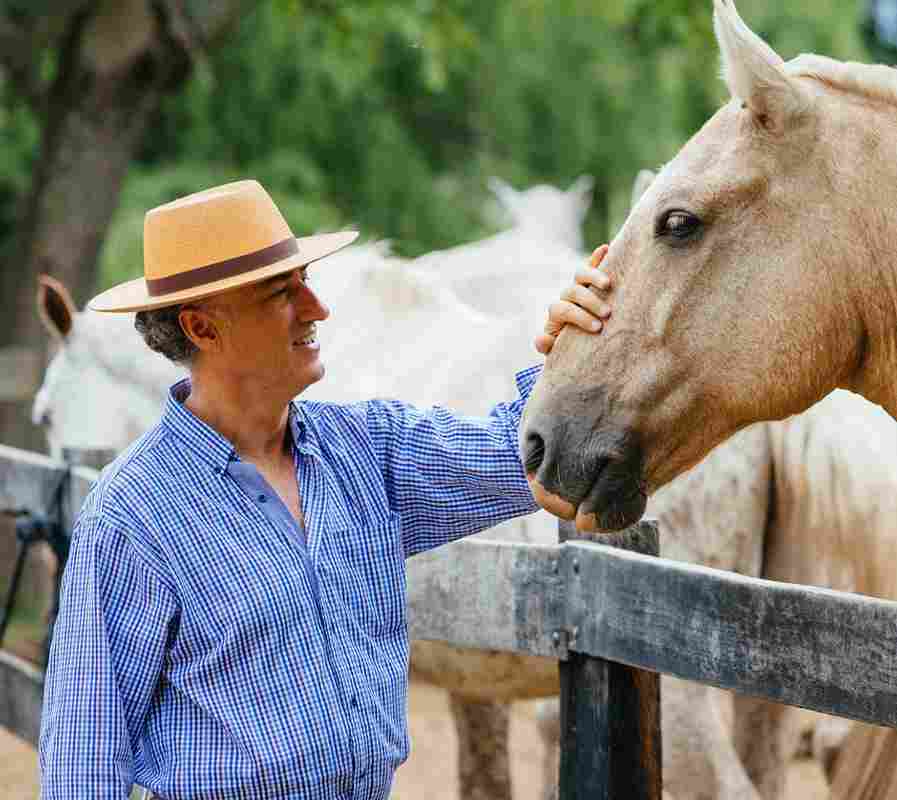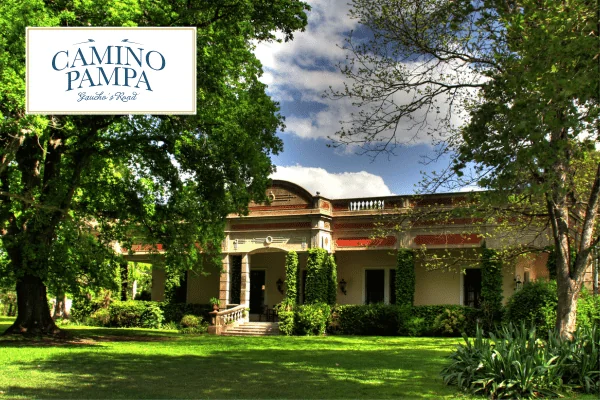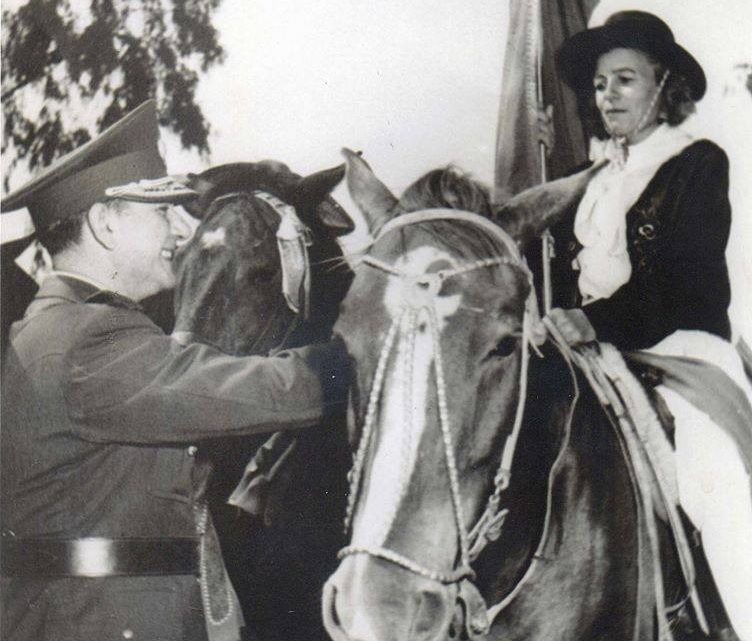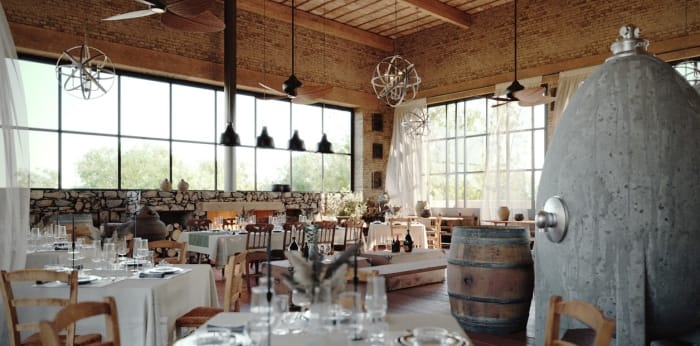Having a Traditional Argentine Asado: An Authentic Experience


Having a Traditional Argentine Asado: An Authentic Experience
Argentina is known worldwide for its rich culture, vibrant traditions, and above all, its legendary cuisine. At the heart of this culinary heritage lies the traditional asado, a barbecue like no other, deeply intertwined with the country’s history and social fabric. Whether you’re at a rustic estancia or a bustling backyard gathering, the asado is more than just a meal—it’s a social ritual, an art form, and a celebration of life.
At Camino Pampa, we introduce visitors to the authentic Argentine asado, blending it with rural experiences, horseback riding, and the tranquility of life on an estancia. This combination of food and nature allows our guests to dive into the full Argentine experience.
The History and Cultural Significance of Asado
The roots of the Argentine asado stretch back centuries, evolving with the country’s early settlers and nomadic gauchos. These cowboys of the Pampas, who roamed the vast plains tending to cattle, perfected the method of cooking meat over an open flame, using simple tools and techniques. The gaucho way of life, characterized by a deep connection to the land and livestock, shaped what we know today as the asado tradition.
Over time, this method of grilling meat became central to Argentina’s identity, evolving from a necessity into a cultural cornerstone. Today, families and friends gather around the parrilla (grill) on weekends to cook vast amounts of meat while sharing stories, laughter, and mate. The asado is a symbol of Argentine hospitality, where the joy of cooking and eating together reflects the value placed on community.
Key Elements of a Traditional Asado
A traditional asado is not just about grilling meat—it’s a carefully orchestrated event that involves a variety of meats, techniques, and rituals. The centerpiece of any asado is the parrilla, the grill used to cook the meat slowly over a wood fire or charcoal (leña or carbón). The use of wood is essential, as it imparts a unique smoky flavor to the meat that defines Argentine barbecue.
The cuts of meat are also distinctive. At Camino Pampa, we introduce our guests to the classic selections such as:
- Ribeye (Ojo de Bife): A juicy, flavorful cut.
- Short ribs (Tira de Asado): A staple, known for its tenderness.
- Chorizo: Spicy sausage, often served as an appetizer.
- Morcilla (Blood Sausage): A rich, traditional favorite.
Vegetables, such as bell peppers or potatoes, are sometimes roasted on the side, but the asado is largely a meat lover’s paradise. The meat is cooked slow and low, often for several hours, ensuring that it remains tender and flavorful. The process itself is an art form, with the asador (grill master) controlling the heat, turning the meat only when necessary, and salting it perfectly.
The Experience of Hosting an Asado: A Social Gathering
Argentine asado is more than just a meal; it’s a social event. Families and friends come together to enjoy the process of cooking, chatting, and sharing a leisurely day together. At Camino Pampa, our tours reflect this social aspect, inviting tourists and visitors to not only observe but participate in the ritual of making an asado.
There’s something magical about teaching someone how to cook over an open fire for the first time. Guests are often amazed by the simplicity and precision involved in grilling meat the Argentine way. They love the idea that making an asado isn’t about rushing but about enjoying every step of the process—from lighting the fire to savoring the first bite of perfectly cooked bife.
For many of our guests, the asado is the highlight of their visit. It’s where they get to bond with the locals, taste the country’s famous beef, and truly feel part of Argentine culture. In these moments, tourists quickly discover that an asado is about more than just food—it’s about human connection.
A Day at the Estancia: Asado and Rural Life
At Camino Pampa, we offer a unique experience that pairs the traditional asado with rural activities such as horseback riding and exploring the vast landscapes of the Pampas. The estancia setting is perfect for immersing oneself in the Argentine countryside, far from the hustle and bustle of the cities.
Guests begin their day by saddling up horses and riding through the rolling plains, guided by local gauchos. This connection to the land is a crucial part of the asado experience, as it harkens back to the days when the gauchos would grill their meat over an open flame after a long day tending cattle. It’s a tradition that has stood the test of time, and it’s one we proudly share with our visitors.
After a morning of exploration, we gather around the fire for the asado. The smell of meat grilling, the crackling of the wood, and the camaraderie built throughout the day create an unforgettable atmosphere. This blend of nature, food, and culture is the essence of what we offer at Camino Pampa, and it’s a window into the authentic Argentine way of life.
How to Prepare a Traditional Asado
Preparing an asado is an art, one that requires patience, skill, and a deep understanding of the fire. The process begins with lighting the wood or charcoal, allowing it to burn down to hot embers. This can take an hour or more, but it’s worth the wait. Unlike other types of barbecue that might rely on quick grilling, the Argentine method values time, ensuring the meat cooks evenly and slowly.
The asador must place the meat on the grill at the right moment—when the heat is strong but not overwhelming. The cuts are seasoned simply with salt, and they’re turned only once during the cooking process to ensure they remain tender. The key is in controlling the heat; too much and the meat burns, too little and it takes too long to cook.
At Camino Pampa, we show visitors the full process, allowing them to get hands-on experience. From selecting the right cuts of meat to managing the grill, guests leave with a newfound appreciation for the skill and tradition behind the Argentine asado.
Gauchos and the Tradition of Argentine BBQ
The asado is deeply linked to Argentina’s rural history, particularly the legacy of the gaucho. These skilled horsemen were the original asadores, grilling their meat in the open plains as they moved cattle across the vast Pampas. Their way of life, marked by independence and a close relationship with nature, is still reflected in the way asado is enjoyed today.
At Camino Pampa, we honor this tradition by introducing our guests to the gaucho way of life. Through horseback riding and storytelling, visitors gain insight into how these legendary figures lived, worked, and celebrated their culture. The asado becomes more than just a meal; it becomes a gateway to understanding the heritage of Argentina.
The Perfect Asado: What Makes It Unique?
The uniqueness of the Argentine asado lies in its simplicity and the communal atmosphere that surrounds it. Unlike other barbecues around the world, the focus is on quality ingredients and slow, careful cooking. There are no heavy marinades or complex sauces—just meat, salt, and fire.
What makes the experience even more special at Camino Pampa is the environment. Our estancia setting, with its expansive fields and authentic rural backdrop, adds a layer of authenticity that’s hard to replicate. The connection between the food, the land, and the people creates an experience that resonates deeply with our guests.
Concluding Thoughts: Sharing the Tradition of Asado with the World
Having a traditional Argentine asado is much more than enjoying a well-cooked piece of meat. It’s about understanding and participating in a cultural experience that has been passed down through generations. At Camino Pampa, we take pride in sharing this unique tradition with tourists from around the world, giving them the opportunity to taste, learn, and live the true Argentine way.
For many of our visitors, the asado is not just a highlight of their trip—it’s a memory they carry with them, a taste of Argentina that lingers long after they’ve returned home. And that is the power of the asado: a simple meal that brings people together, transcending borders and cultures.
Share in socials
WANT TO KNOW THE 'GAUCHO ARGENTINO'? BOOK A TOUR!
You may also be interested in:

Why This Gaucho Experience Stands Out from Other Estancia Tours in Buenos Aires
Some people have been asking us about our higher price compared to other Gaucho/Estancia Tours in Buenos Aires.You’ve probably traveled…
Ana Beker: The Horsewoman Who United the Americas on Horseback
More than 70 years ago, when GPS and social media didn’t exist, an Argentine woman embarked on a journey that…
Estancia Vigil: A Testament to Argentine Winemaking Excellence
How did Alejandro Vigil's journey in winemaking begin? Alejandro Vigil's passion for viticulture ignited during his formative years in Mendoza,…



